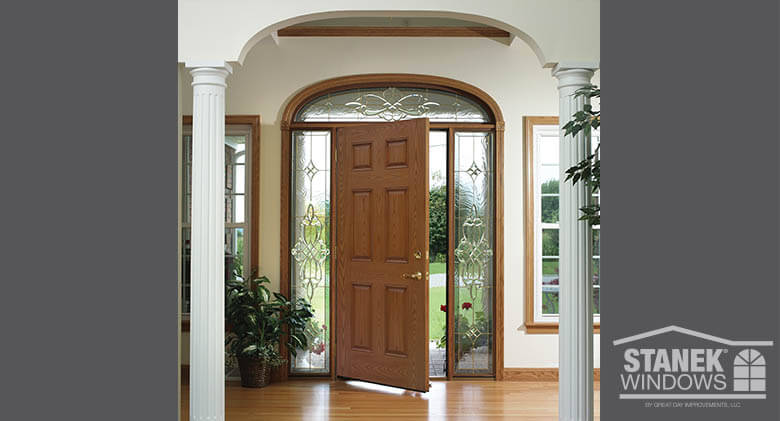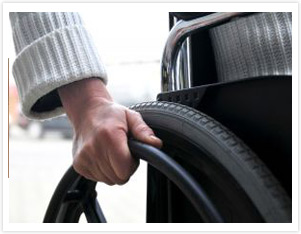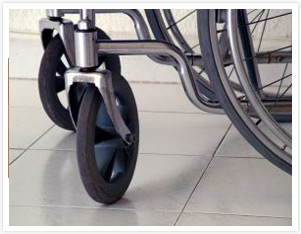
In this post, you'll learn ...
- If you need to make your home more accessible and safe.
- How to start improving accessibility - with doors and windows.
- What the proper measurements are for accessibility.
- Resources for improving home accessibility.
Improving Accessibility
 Take a look at your exterior and interior doors, and the windows in your home. Then ask yourself this question:
Take a look at your exterior and interior doors, and the windows in your home. Then ask yourself this question:
If my loved ones or I were injured, or, if due to aging our mobility was limited, would we have easy access to our home and all of the rooms inside?
While this may not be an initial consideration when building or buying a home, it is likely one you will face at some point in your life. Parents age. We age. And, though it is not something we like to consider, accidents happen.
The following article outlines modifications you can make to the doors and windows in your home, in order to make the space accessible for those who have physical limitations or require mobility equipment to safely get around.
First Things First
Before you begin replacing doors and windows, walk through your home room by room. Start at the main entry point. Notice its width. Is it easily accessible? Does the lock stick or open easily? Is the door warped, and is it wide enough for easy access?
Now, move inside. Take note of the doors or room openings leading into each space. Are they wide enough to accommodate a wheelchair? Can they be easily navigated for those using a walker or cane?
In this article we will focus on doors and windows. The following are facts you should know about making these accessible to all.
Doors: Things to Consider for Those with Mobility Issues
A standard wheelchair ranges from about 24-27” wide. In order to accommodate a wheelchair from a front-on direction, the door opening should be a minimum of 32” wide. Most entry doors are a minimum of 36”, which is wide enough to allow space for a wheelchair or walker; however, interior doors can be as narrow as 24”. If your home is equipped with a door that is at least 30” wide, you might be able to utilize offset door hinges to increase the width of the space by 2”.
Interior doors pose problems not only in width but also in location and direction in which the door opens and closes. If the door is located in the hallway, you must take into account the width of the hallway and the ease of maneuvering a walker, wheelchair or cane at certain angles. The American Disabilities Act states accessible doors should provide 32” of clear width, which is the width between the face of the door and the opposite stop. In the book In-laws, Outlaws and Granny Flats: Your Guide to Turning One House Into Two, author Michael Litchfield states interior doors should be at least 32” wide to accommodate wheelchairs and walkers.
Another consideration: Older exterior doors may have warped over time, along with the frame. This can cause sticking or difficulty with locking and/or opening of the door. If you find your door sticking often, consider replacing the door to ensure easy accessibility.
Additionally, check locks. Are they easy to reach, even for those in a wheelchair? Do they stick? Can someone with mobility issues easily lock and unlock the door from both the interior and the exterior of the room/home?
Windows
 Those without mobility issues don’t give much thought to windows unless it’s time to clean them, but people in wheelchairs or those who utilize walkers or canes will find that windows can create multiple problems. Hard-to-reach locks pose safety risks, while windows that stick can make opening and closing the window unsafe, if not impossible altogether.
Those without mobility issues don’t give much thought to windows unless it’s time to clean them, but people in wheelchairs or those who utilize walkers or canes will find that windows can create multiple problems. Hard-to-reach locks pose safety risks, while windows that stick can make opening and closing the window unsafe, if not impossible altogether.
Window sills might be too high for those in wheelchairs either, writes Litchfield. According to the author, a sill height of 18 to 20 inches is best for someone who is in a wheelchair, since the chair seat is approximately 20 inches high. Yet your windows may be higher than this, which will make accessibility difficult. Consider replacement windows if your windows stick, or if they are difficult to open. With hardware options such as a crank handle, a homeowner can open a window from a lower height, and with little resistance.
What if Changes Need to be Made?
After surveying your home you may find adjustments need to be made in the form of new doors and windows. Because this can be a large undertaking, Stanek Windows offers a free, in-home consultation.
During the consultation a representative will look at your current doors and windows and offer recommendations for changes that will make your home accessible to everyone. As always, we do all of the work, including designing, manufacturing, installing, servicing and guaranteeing our windows.
Want to know what your completed project will look like? Stanek Windows also offers ProVia Studios, a home remodeling visualization tool that lets you see how your project will look with different doors and windows. Request a free design consultation.
Call Stanek® Windows today at 800-230-8301 to schedule your free, no-obligation home consultation.
Additional Resources
Adaptive Access – Move or Improve? http://www.adaptiveaccess.com/home_changes.php
What Modifications Might You Need? https://eldercare.acl.gov/Public/Resources/Factsheets/Home_Modifications.aspx
In-laws, Outlaws and Granny Flats: Your Guide to Turning One House Into Two, Michael Litchfield
 You May Also Be Interested In:
You May Also Be Interested In: